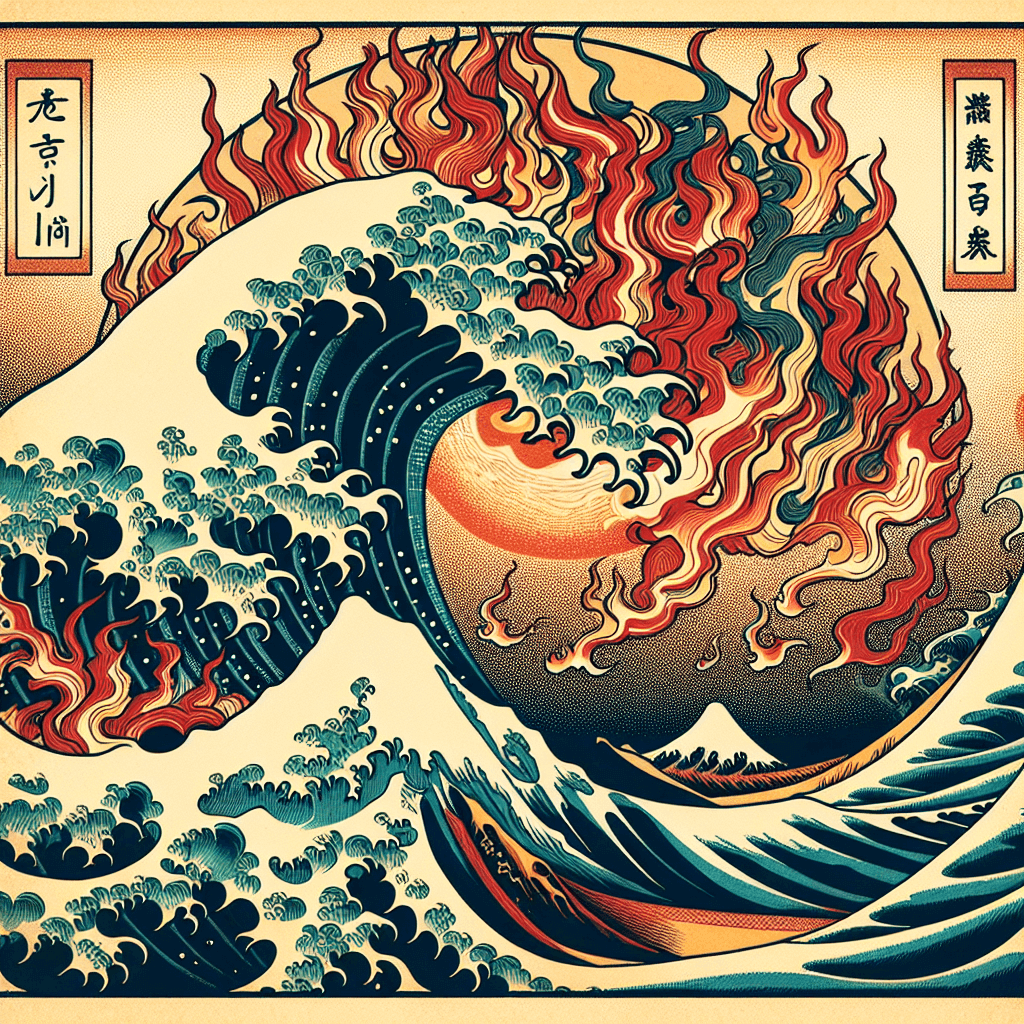The Elemental Way: Godai in the Philosophy and Practice of Japanese Martial Arts
syndu | May 15, 2024, 8:13 p.m.

The Elemental Way: Godai in the Philosophy and Practice of Japanese Martial Arts
The ancient Japanese philosophy of Godai, which delineates the universe into five fundamental elements—Earth (Chi), Water (Mizu), Fire (Hi), Wind (Kaze), and Void (Ku)—has long been a source of inspiration and guidance in various aspects of Japanese life, including the revered martial arts. This post delves into the profound influence of these elements on the philosophy and practice of Japanese martial arts, exploring how they shape the mindset, techniques, and strategic thinking of martial artists.
Chi: The Earth Element and Martial Stability
Chi, symbolizing stability and substance, is the bedrock of martial arts training. It represents the solid stance and balance that are essential for any martial artist. In disciplines such as Judo and Sumo, the concept of Chi is manifested in the firm grounding of the feet, the balance in movement, and the rooted posture that resists being easily toppled. The Earth element teaches practitioners to be immovable in the face of adversity, embodying resilience and fortitude.
Mizu: The Water Element and Fluidity of Movement
Mizu, with its flowing and adaptable nature, is reflected in the fluid movements and flexibility of martial arts like Aikido and Kendo. Water teaches the martial artist to flow around obstacles rather than confront them head-on, using an opponent's energy against them. The principle of Mizu encourages adaptability and the ability to yield when necessary, only to return with greater force, much like the ebb and flow of tides.
Hi: The Fire Element and Combative Spirit
Hi represents the fiery spirit and the explosive power that a martial artist channels during combat. In Karate and Kyokushin, the Fire element is evident in the kiai—the spirited yell that accompanies a strike, serving to startle the opponent and focus the practitioner's energy. Fire symbolizes the passion, intensity, and transformative power that burns within a martial artist, driving them to push beyond their limits.
Kaze: The Wind Element and Strategic Movement
Kaze, signifying movement and change, is crucial in the strategic positioning and swift movements characteristic of Ninjutsu and Shurikenjutsu. The Wind element teaches martial artists to be as elusive as the breeze, moving with agility and unpredictability. It is the breath of life in combat, dictating the rhythm of engagement and enabling swift, decisive actions that can change the course of a confrontation.
Ku: The Void Element and the Mind of No-Mind
Ku, the Void, is perhaps the most enigmatic of the Godai elements, representing the state of potential and the realm of the enlightened mind. In the context of martial arts, Ku is akin to the concept of Mushin, or the "mind of no-mind," where the practitioner's mind is free from thoughts of anger, fear, or ego, allowing for a state of pure, reactive presence. This element is central to the Zen-influenced practice of Iaido, where the swordsman must clear their mind to react instinctively and effectively.
Conclusion: The Harmony of Godai in Martial Arts
The elements of Godai are not isolated teachings but are interwoven into a harmonious whole that guides the martial artist's journey. Each element complements the others, creating a balanced and comprehensive approach to martial arts that encompasses physical technique, mental strategy, and spiritual growth. By embracing the wisdom of Godai, practitioners can attain not only mastery of their art but also a deeper understanding of life's interconnectedness and the flow of the natural world.
As we reflect on the role of Godai in martial arts, we recognize that these ancient elements continue to resonate with modern practitioners, offering timeless insights into the art of combat and the pursuit of personal excellence.
Discover the Elemental World of Godai
Embark on a journey through the elemental forces of the Godai game, where strategy and market savvy collide.
Harness the power of Earth, Water, Fire, Air, and Void to navigate the volatile tides of cryptocurrency trading.
Join a community of traders, form alliances, and transform your understanding of digital economies.
Enter the Godai Experience






